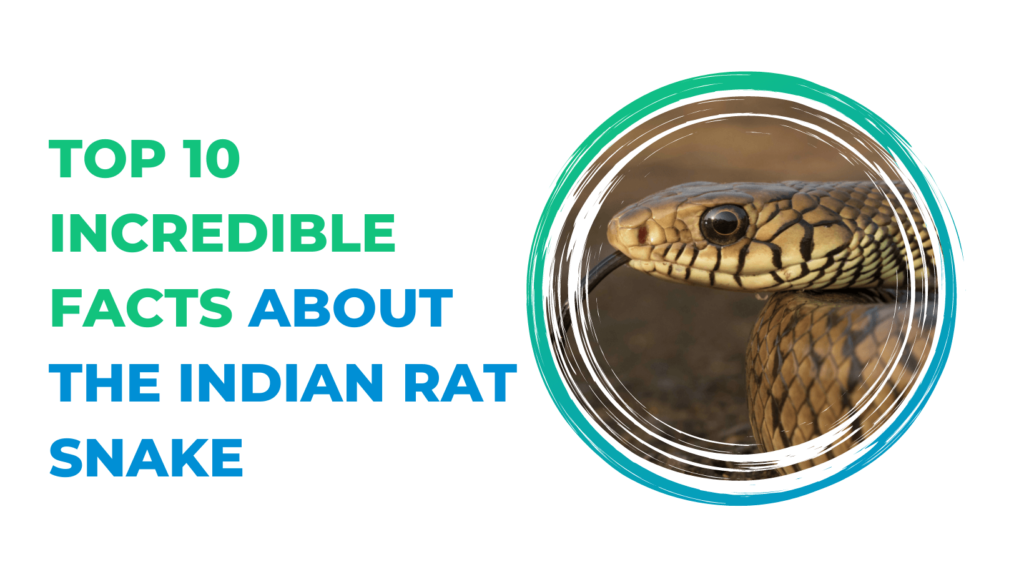
The Indian Rat Snake (Ptyas mucosa) is a fascinating creature that inhabits much of the Indian subcontinent. Often misunderstood and mistaken for more dangerous snakes, the Indian Rat Snake is a unique species with its own set of intriguing characteristics. This article delves into the top 10 incredible facts about the Indian Rat Snake, shedding light on its behavior, habitat, and importance in the ecosystem.
1. Wide Geographic Distribution
The Indian Rat Snake is found throughout the Indian subcontinent, extending its range to Bangladesh, Pakistan, Sri Lanka, Nepal, and parts of Southeast Asia. This wide distribution showcases the snake’s adaptability to various environments, from dense forests and grasslands to agricultural fields and urban areas. Their presence in diverse habitats underscores their remarkable ability to thrive in different ecological conditions.
2. Impressive Size and Speed
Indian Rat Snakes are among the largest snakes in the region, with adults typically reaching lengths of 6 to 8 feet, though some individuals can grow even longer. Their slender, muscular bodies contribute to their agility and speed, allowing them to be highly effective hunters. They are known for their rapid movements, capable of escaping predators and swiftly capturing prey.
3. Non-Venomous and Harmless
Despite their formidable appearance, Indian Rat Snakes are non-venomous and pose no threat to humans. They rely on their speed and constricting ability to subdue prey rather than venom. This makes them an essential part of the ecosystem, controlling rodent populations and maintaining a balance in their habitat.
4. Diet and Hunting Techniques
Indian Rat Snakes primarily feed on rodents, which helps control the population of these pests in both rural and urban areas. Their diet also includes birds, eggs, frogs, and lizards. They are skilled climbers and swimmers, allowing them to hunt a variety of prey in different environments. Their keen sense of smell and sharp vision aid them in locating and capturing their food.
5. Distinctive Appearance
The Indian Rat Snake has a distinctive appearance that makes it easily recognizable. Its body is typically olive, brown, or grey, with a lighter underside. The scales on its back are smooth and glossy, giving it a sleek look. Juveniles often have a more vibrant coloration with distinct patterns, which fade as they mature.
6. Defensive Behavior
When threatened, the Indian Rat Snake can exhibit aggressive behavior, including hissing loudly, inflating its body, and striking repeatedly. This behavior is primarily a bluff to intimidate potential predators or threats. They may also produce a foul-smelling musk from their cloacal glands as a deterrent. Despite this display, they prefer to flee rather than engage in confrontation.
7. Reproduction and Lifespan
Indian Rat Snakes are oviparous, meaning they lay eggs rather than giving birth to live young. Females typically lay clutches of 6 to 15 eggs, which hatch after an incubation period of about two months. The hatchlings are independent from birth and must fend for themselves. In the wild, Indian Rat Snakes can live for up to 12-15 years, though their lifespan can be longer in captivity with proper care.
8. Role in Ecosystem
Indian Rat Snakes play a crucial role in their ecosystem by controlling the populations of small mammals and other pests. This predatory behavior helps maintain a balance in the food web and reduces the spread of diseases that rodents can carry. Their presence is particularly beneficial in agricultural areas, where they help protect crops from being damaged by rodents.
9. Adaptation to Urban Environments
The Indian Rat Snake has shown remarkable adaptability to urban environments. As cities expand and natural habitats shrink, these snakes have learned to navigate human-dominated landscapes. They often inhabit gardens, parks, and even buildings, where they continue to hunt for rodents. This adaptability is a testament to their resilience and ability to coexist with humans.
10. Cultural Significance
In many parts of India, the Indian Rat Snake holds cultural significance. They are often associated with folklore and traditional beliefs. In some regions, they are considered symbols of fertility and prosperity. However, due to their resemblance to the venomous Indian Cobra, they are sometimes unjustly feared and killed. Education and awareness about their harmless nature and ecological importance are crucial for their conservation.
Conclusion
The Indian Rat Snake is a remarkable species with a host of fascinating attributes. From their impressive size and speed to their adaptability and ecological role, these snakes are an integral part of the biodiversity of the Indian subcontinent. By understanding and appreciating these incredible facts about the Indian Snake, we can foster a greater respect for these creatures and the vital role they play in our environment. Their presence reminds us of the delicate balance in nature and the importance of conserving all species, no matter how misunderstood they may be.







